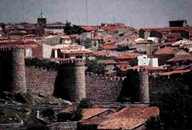Urbanization. Ancient and Medieval Cities
The world as we know it today is dominated by cities. Not only are cities home to an increasing proportion of the world's population, but urban life-styles have diffused to urban and rural places alike. Cities tend to be centers of innovation and centers of technological development, as well as sources of capital and seats of government. In many countries, the rural community, isolated from the outside world, is a thing of the past. Computers, telephones, radios, and cable television connect even the loneliest stretches of rural Wyoming or Angola with modern urban civilization.
Ancient and Medieval Cities. Cities have existed since agriculture was invented. Hunting-and-gathering societies had no cities. Permanent settlements were established only as experiments with domesticating plants and animals proved increasingly successful, permitting the cultivation of steady supplies of food at fixed locations.
Permanent settlement offered several advantages to previously nomadic hunters and gatherers. Settlement enabled food to be stored for later use. This allowed for the accumulation of surplus commodities, encouraging people to develop trade networks. Permanent settlement also enabled people to collect and store artifacts.
Nomads carried all of their possessions with them as they moved from one place to another, but residents of permanent settlements could accumulate tools, handicrafts, and other artifacts. Urban settlement also made defense against hostile cultures easier. Walls and fortifications surrounding many ancient and medieval cities testify to the importance of military defense as a function of the preindustrial city (Figure 10-1).

Figure 10—1 The Preindustrial City. Prior to the development of the modern global economy, the primary functions of most cities were religious, military, and administrative. Commercial functions were relatively unimportant
Many ancient and medieval cities served as centers of administration for empires. Ancient Rome was the seat of power of the Roman Empire. Carthage, Babylon, Timbuktu and other major cities of the ancient world played similar roles. The principal functions of these cities included administration, tax collection, and military and religious organization.
Empires developed as societies conquered their weaker neighbors. Conquered peoples were expected to pay tribute to their conquerors in the form of taxes, goods, or labor. This helped to support the administrative, religious, and military functions of the empire. The spatial arrangement of the cities reflected the relative importance of these functions.
Many were located on hilly terrain. Important governmental and religious buildings, such as the Acropolis of Athens, were built at the tops of the hills in order to reduce the risk of attack. Other ancient cities were built along river bends. From such sites, urban dwellers could detect attackers from upstream or downstream.
In many cases, natural features were supplemented with fortifications. Walls, moats, and other defenses were built and maintained. Many of Europe's medieval cities were walled. As these cities expanded, the walls were moved outward. Today, the ringed settlement pattern of Paris, Vienna, and other European cities reflects the successive outward movement of the city walls (Figure 10-2).

Figure 10-2 Walled City of Avila, Spain. In medieval Europe, defense against attacking invaders was an important urban function. Many cities were built with walls around them, and in some cases successive rings of walls were constructed as the city expanded outward
Bycontemporary standards, most ancient and medieval cities were quite small. In the fourteenth century, London's 35,000 people were crammed into an area of 720 acres, or barely more than a square mile. Intense crowding, primitive sanitation, and lack of modern medical knowledge resulted in the spread of disease. Royalty, nobility, and wealthy families maintained isolated rural residences to which they could move in order to escape epidemics.
The size and importance of cities in the ancient and medieval world changed as their empires expanded and contracted. For example, the city of Rome may have had up to a million inhabitants at the height of the Roman Empire. Rome declined quickly after the Roman Empire collapsed. During the Middle Ages. Rome's population dropped to under fifty thousand.
Date added: 2024-03-20; views: 610;
